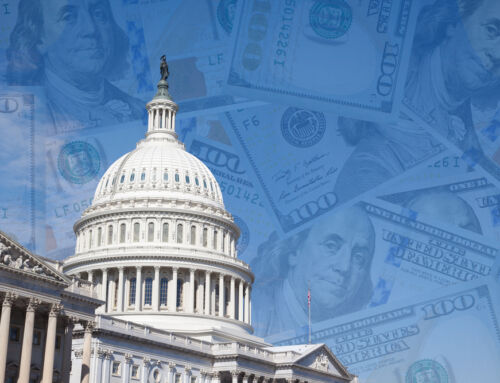Finally: Some good news on the COVID-19 front! The Pfizer/BioNTech vaccine, which shows a 95 percent efficacy rate, as well as the Moderna vaccine with its 94 percent efficacy, are both being fast-tracked by the FDA for emergency use. There is optimism that they will receive approval in the U.S. any day now, and initial doses are already being administered in the U.K.
This past week, the CDC met to determine who would be first in line to receive the limited number of COVID-19 vaccine doses that will be available initially. This team of experts put healthcare workers and residents and employees of long-term care (LTC) facilities at the top of the list. This would include both assisted living and skilled nursing facilities (nursing homes).
This is welcome news on a variety of levels. Even the credit rating agency, Fitch Ratings, has already issued a commentary stating that the availability and distribution of the vaccine would be an immediate stabilizing factor for skilled nursing facilities, which have faced tremendous pressure on operating budgets since March.
COVID-19 in long-term care facilities
Long-term care facilities, particularly skilled nursing facilities, have been among the hardest hit by the virus. As of the end of November, LTC residents have accounted for over 100,240 of the deaths attributed to COVID-19 in this country, according to the COVID-19 Tracking Project. That’s well-over a third of all pandemic-related U.S. deaths in the past 10 months.
During the month of November, over one-third of states experienced their highest numbers of new long-term care COVID deaths since the pandemic began. The Midwest has been especially hard-hit recently, with some facilities in that region experiencing staffing shortages as employees fall ill, leading states to call in the National Guard to assist.
Other states that experienced high numbers of LTC deaths early on in the pandemic are seeing a resurgence in recent weeks. For example, you may recall an outbreak at a LTC facility in Washington state early on in the pandemic. That state seemed to have gotten their case numbers under control, but they have now reported a 75 percent increase in facility outbreaks for November.
>> Related: Lessons in Resiliency from Senior Living Communities
Stopping the virus in senior living communities
I’ve written before about how, despite these somber statistics, the majority of long-term care facilities, particularly many of those operating within a continuing care retirement community (CCRC, or life plan community), have actually done a really good job of keeping their residents safe and healthy amid the pandemic. The minimal number of cases (or even no cases at all) at many retirement communities is something that also should be acknowledged and spotlighted.
From instituting strict visitor restrictions and redoubling cleaning protocols to screening employees’ health each day, communities have succeeded in keeping the virus out or effectively containing it. After all, senior living communities must guard against highly contagious viruses all the time, from influenza to stomach bugs like norovirus. The precautions taken to prevent community spread of COVID-19 are not too different from measures used to stop these other highly contagious illnesses. Yet the negative consequences of an outbreak are often much more severe.
>> Related: Senior Living Continues the Fight Against COVID-19
COVID-19 vaccine approvals imminent
The FDA’s vaccine advisors — the Vaccines and Related Biological Products Advisory Committee — is scheduled to meet this week (December 10) to consider emergency use authorization for the Pfizer/BioNTech vaccine. They will meet again on December 17 to discuss potential authorization of Moderna’s vaccine.
The imminent approval of two COVID-19 vaccines may well be the inflection point we need to turn the tide of this terrible virus. And these vaccine developers are working around the clock to help in this effort.
Moderna expects to have up to 125 million doses of their vaccine available globally by the end of first quarter 2021. Pfizer has experienced unfortunate supply chain issues that have caused them to cut in half their predictions on the number of doses they will have ready. They now are forecasted to have 50 million doses of their vaccine by the end of this year.
Hope is on the horizon for our most vulnerable seniors
Because there will not be enough COVID-19 vaccine initially for every American, I’m thankful that the CDC’s Advisory Committee for Immunization Practices recognized the importance of getting the nation’s 3 million long-term care residents put at the top of the vaccine recipient list, along with 21 million frontline health care workers and support staff.
It will take a gargantuan and highly coordinated effort to distribute and administer these vaccines. Both vaccines will require two doses administered 21 days apart. Research from the clinical trials shows that full protection from the virus is acquitted six to eight weeks after the first dose.
The coming weeks and months are predicted to be bleak as the virus continues to spread unchecked around the country, hospitalizations hit new records, and deaths continue to spike. But thanks to the hard work of scientists and researchers around the world, we have a COVID-19 vaccine on the horizon. There is a light at the end of this dark tunnel.






